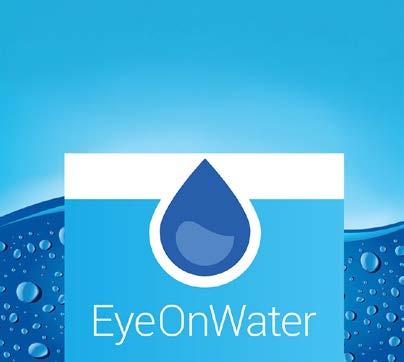Este informe contiene información muy importante sobre el agua que usted toma. Para obtener una versión de este documento en español, visite: www.colaccr-esp.com.


Este informe contiene información muy importante sobre el agua que usted toma. Para obtener una versión de este documento en español, visite: www.colaccr-esp.com.

Columbia Water’s new advanced meter upgrade project is the largest cellular deployment of smart meters in North America with over 150,000 meters installed. This project provides customers with fewer estimated bills, real-time alerts about possible leaks, and the ability to better manage water use. If you have a new meter, please download our EyeOnWater app that allows you to track your water usage in real time and set up leak notifications.
Go to columbiascwater.eyeonwater.com/signin for more details.
Multi-media filters at both water treatment plants are getting a facelift. Filtration is an important step in our treatment process and as such, it requires periodic maintenance. After several years of use, rehabilitation is necessary to ensure proper removal of suspended solids and to make sure proper disinfection occurs following this step.
The City of Columbia Customer Assistance Program (CAP) is available to Columbia Water customers in critical financial need to help pay their past-due water and sewer bills. In 2022, 378 customers were assisted with $244,191 of funding for past due bills.
For more information, please visit our website at columbiascwater.net/billing-assistance or contact Customer Care at (803) 545-3300 or by email at customercare@columbiasc.gov

Drinking water, including bottled water, may reasonably be expected to contain at least small amounts of some contaminants. The presence of contaminants does not necessarily indicate that water poses a health risk. More information about contaminants and potential health effects can be obtained by calling the US EPA’s Safe Drinking Water Hotline (800-426-4791)
The sources of drinking water (both tap water and bottled water) include rivers, lakes, streams, ponds, reservoirs, springs, and wells. As water travels over the surface of the land or through the ground, it dissolves naturally occurring minerals and radioactive material, and can pick up substances resulting from the presence of animals or from human activity.
Columbia Water regularly flushes fire hydrants to keep water moving through the system and to improve water quality. Want to receive boil water alerts and advisories from Columbia Water? Residents can sign up to receive notices for their area at: publicsafety.columbiasc.gov/citizens-alerts/
For additional information: City of Columbia Water Quality Complaints, Billing, & Customer Care Center 803-545-3300
customercare@columbiasc.gov columbiascwater.net/customer-care SC DHEC - Bureau of Water 803-898-4300
National Lead Information Clearinghouse 800-424-LEAD

Consumer Product Safety Commission 800-638-2772

Columbia Water now can be found on Instagram, Facebook and Twitter – we are ColumbiaSCWater on all three!
The City of Columbia’s drinking water is considered safe to drink. The City’s SC DHEC-certified laboratory performs more than 200,000 analyses each year to ensure that the water the City supplies to its customers meets all US EPA and SC DHEC standards. Additional analyses are performed by SC DHEC, the state agency that regulates and oversees public water systems. Samples are tested at every stage of the treatment process and at hundreds of points throughout more than 2,500 miles of pipeline that make up the City’s distribution system. The City also conducts additional testing in response to customer complaints. The sources of Columbia’s drinking water are two surface waters, the Broad River (via the Columbia Canal) and Lake Murray. The regulated substances listed below were detected in the City’s water supply during 2022. Sampling results:
The TT requirement for TOC requires the running annual average of the TOC removal percentage achieved to be at least as great as the TOC removal percentage required. Compliance is judged quarterly, and the City met the requirement for all four quarters in 2021.
Erosion of natural deposits; water additive which promotes strong teeth; discharge from fertilizer and aluminum factories
Runoff from fertilizer use; leaching from septic tanks, sewage; erosion of natural deposits
By-product of drinking water disinfection
By-product of drinking water disinfection
By-product of drinking water chlorination; formed when chlorine reacts with organic matter
By-product of drinking water chlorination; formed when chlorine reacts with organic matter
Naturally present in the environment
Water additive to control microbial growth
Water additive to control microbial growth
Water additive to control microbial growth
Decay of natural and man-made deposits
Erosion of natural deposits
Erosion of natural deposits
(1) If present, elevated levels of lead can cause serious health problems, especially for pregnant women and young children. Lead in drinking water is primarily from materials and components associated with service lines and home plumbing. The City of Columbia is responsible for providing high quality drinking water, but cannot control the variety of materials used in plumbing components. When your water has been sitting in your pipes for several hours, you can minimize the potential for lead exposure by flushing your tap for 30 seconds to 2 minutes before using water for drinking or cooking. If you are concerned about lead in your water, you may wish to have your water tested. Information on lead in drinking water, testing methods, and steps you can take to minimize exposure is available from the Safe Drinking Water Hotline at (800) 426-4791 or online at www.epa.gov/safewater/lead. City of Columbia water customers can call (803) 545-3300 to find out about free lead testing.
(2) The MCL for beta particles is 4 mrem/year. EPA considers 50 pCi/L of beta particles to be the level of concern associated with this MCL.
Action Level — The concentration of a contaminant which, if exceeded, triggers treatment or other requirements which a water system shall follow.
Detected Level — The concentration of a substance detected in a water sample. The detected levels specified in the table to the left are the highest levels detected if multiple samples were collected, except for Total Organic Carbon (TOC) or unless specified otherwise. For TOC, the specified removal rate is the rate required by SC DHEC based on data reported by the City.
LRAA (Locational Running Annual Average) — An average at each sample point for four quarters in the calendar year.
LCRR - Lead and Copper Rule Revisions.
MCL (Maximum Contaminant Level) — The highest level of a contaminant that is allowed in drinking water. MCLs are set as close to the MCLGs as feasible using the best available treatment technology.
MCLG (Maximum Contaminant Level Goal) — The level of a contaminant in drinking water below which there is no known or expected risk to health. MCLGs allow for a margin of safety.
mrem — milli Roentgen equivalent man (unit of radiation dosage)

MRDL (Maximum Residual Disinfectant Level) – The highest level of a disinfectant allowed in drinking water. There is convincing evidence that addition of a disinfectant is necessary for control of microbial contaminants.
MRDLG (Maximum Residual Disinfectant Level Goal) - The level of a drinking water disinfectant below which there is no known or expected risk to health. MRDLGs do not reflect the benefits of the use of disinfectants to control microbial contaminants.

N/A (Not Applicable) — Does not apply.
NTU (Nephelometric Turbidity Unit) — Units of measure for amount of particles in water. pCi/L – picocuries/Liter (a measure of radioactivity)
PFAS - Per- and Polyfluoroalkyl Substances. ppb (parts per billion) — One part in a billion parts (equivalent to one penny in $10,000,000).
ppm (parts per million) — One part in a million parts (equivalent to one penny in $10,000).
TT (Treatment Technique) — A required process intended to reduce the level of a contaminant in drinking water. 90th% (90th Percentile) — The Action Level for lead and copper for a water system that serves more than 100,000 people.
< Less than
> Greater than
These are man-made chemicals found in the environment. They bio-accumulate in the environment and are found in many products. The US EPA proposed a regulatory limit (MCL) to be finalized at the end of the year. Treatment for removal of PFAS consists of costly techniques that would be added to our treatment. To learn more about our proactive efforts to monitor for PFAS, visit our site: https://columbiascwater.net/pfas/
In order to minimize exposure to lead and copper in drinking water, the US EPA is revising their 1991 rule. By proactively sampling the system, Columbia Water complies with current regulation, while developing an inventory of service line materials. Customers will be able to access the inventory viewer by October 16, 2024, when LCRR comes in effect.
If you are interested in sampling, please visit: https://columbiascwater.net/about-drinking-water/water-quality-testing/
We are looking for participants to help with our lead & copper program. If you qualify for sampling, you may be eligible to receive a credit on your bill!

n Microbial contaminants, such as viruses and bacteria, which may come from sewage treatment plants, septic systems, agricultural livestock operations, and wildlife.
n Inorganic contaminants, such as salts and metals, which can be naturally occurring or result from urban stormwater runoff, industrial or domestic wastewater discharges, oil and gas production, mining, or farming.
n Pesticides and herbicides, which may come from a variety of sources such as agriculture, stormwater runoff, and residential uses.
n Organic chemical contaminants, including synthetic and volatile organics, which are by-products of industrial processes and petroleum production and can also come from gas stations, urban stormwater runoff, and septic systems.
n Radioactive contaminants, which can be naturally occurring or be the result of oil and gas production and mining activities.
In order to ensure that tap water is safe to drink, the US EPA prescribes regulations that limit the amount of certain
Some substances in water, listed in the table to the right, affect the taste, odor, and hardness of our drinking water. Because these substances do not impact a person’s health, the US EPA has established secondary parameters that are non-enforceable, recommended guidelines.The City meets these guidelines in addition to the regulations set forth by the US EPA. See US EPA Regulated Secondary Drinking Water Standards for details; visit: https:// www.epa.gov/sdwa/secondary-drinking-waterstandards-guidance-nuisance-chemicals
The City also collects information about additional parameters that are not regulated by the US EPA. While these parameters do not impact a person’s health, they may be useful for those using water for specialized purposes like brewing, or maintaining equipment like chillers and boilers. See the NonRegulated Parameters table below for details.
contaminants in water provided by public water systems. Food and Drug Administration regulations establish limits for contaminants in bottled water, which must provide the same protection for public health.
Some people may be more vulnerable to contaminants in drinking water than the general population. Immunocompromised persons, such as persons with cancer undergoing chemotherapy, persons who have undergone organ transplants, people with HIV/AIDS or other immune system disorders, some elderly, and infants, can be particularly at risk from infections. These people should seek advice about drinking water from their health care providers. EPA/CDC guidelines on appropriate means to lessen the risk of infection by Cryptosporidium are available from the Safe Drinking Water Hotline (800-426-4791) Testing since 1994 has revealed no signs of Cryptosporidium in Columbia’s treated water.
City of Columbia water customers can call 803-545-3300 for more information about water testing or to have your home water tested by our laboratory staff.
Customers who need additional water quality information can contact Dr. Alejandra Beier, Drinking Water Compliance Manager, at Alejandra.Beier@columbiasc.gov or (803) 733-8211